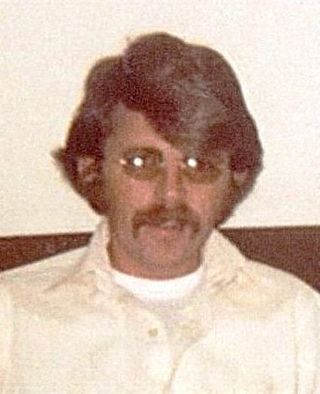
The FBI Ten Most Wanted Fugitives is a most wanted list maintained by the United States's Federal Bureau of Investigation (FBI). The list arose from a conversation held in late 1949 between J. Edgar Hoover, Director of the FBI, and William Kinsey Hutchinson, International News Service editor-in-chief, who were discussing ways to promote capture of the FBI's "toughest guys". This discussion turned into a published article, which received so much positive publicity that on March 14, 1950, the FBI officially announced the list to increase law enforcement's ability to capture dangerous fugitives. The first person added to the list was Thomas J. Holden, a robber and member of the Holden–Keating Gang on the day of the list's inception.

Clayton Lee Waagner is an American convicted bank robber and anti-abortion terrorist. He was born Roger Waagner in North Dakota. He was an escaped fugitive during the spring, summer and fall of 2001 and was the FBI's 467th fugitive to be placed on the Ten Most Wanted list for carjackings, firearms violations, and bank robbery on September 21, 2001. He was placed on the United States Marshals Service Top 15 Fugitives list for sending more than 280 letters that claimed to contain anthrax, which he mailed to Planned Parenthood with return addresses of the Marshals Service and the Secret Service beginning in October 2001. He is currently in prison.

In 1951, the United States FBI, under Director J. Edgar Hoover, continued for a second year to maintain a public list of the people it regarded as the Ten Most Wanted Fugitives.

In 1952, the United States FBI, under Director J. Edgar Hoover, continued for a third year to maintain a public list of the people it regarded as the Ten Most Wanted Fugitives.

In 1953, the United States FBI, under Director J. Edgar Hoover, continued for a fourth year to maintain a public list of the people it regarded as the Ten Most Wanted Fugitives.

In 1954, the United States FBI, under Director J. Edgar Hoover, continued for a fifth year to maintain a public list of the people it regarded as the Ten Most Wanted Fugitives.

In 1956, the United States FBI, under Director J. Edgar Hoover, continued for a seventh year to maintain a public list of the people it regarded as the Ten Most Wanted Fugitives.

In 1959, the United States FBI, under Director J. Edgar Hoover, continued for a tenth year to maintain a public list of the people it regarded as the Ten Most Wanted Fugitives.

In 1960, the United States FBI, under Director J. Edgar Hoover, continued for an eleventh year to maintain a public list of the people it regarded as the Ten Most Wanted Fugitives.

In 1961, the United States FBI, under Director J. Edgar Hoover, continued for a twelfth year to maintain a public list of the people it regarded as the Ten Most Wanted Fugitives.

In 1962, the United States FBI, under Director J. Edgar Hoover, continued for a thirteenth year to maintain a public list of the people it regarded as the Ten Most Wanted Fugitives.

In 1963, the United States FBI, under Director J. Edgar Hoover, continued for a fourteenth year to maintain a public list of the people it regarded as the Ten Most Wanted Fugitives.

In 1964, the United States FBI, under Director J. Edgar Hoover, continued for a fifteenth year to maintain a public list of the people it regarded as the Ten Most Wanted Fugitives.

In 1965, the United States FBI, under Director J. Edgar Hoover, continued for a sixteenth year to maintain a public list of the people it regarded as the Ten Most Wanted Fugitives.

In 1966, the United States FBI, under Director J. Edgar Hoover, continued for a seventeenth year to maintain a public list of the people it regarded as the Ten Most Wanted Fugitives.

In 1967, the United States FBI, under Director J. Edgar Hoover, continued for an eighteenth year to maintain a public list of the people it regarded as the Ten Most Wanted Fugitives.

In 1968, the United States FBI, under Director J. Edgar Hoover, continued for a nineteenth year to maintain a public list of the people it regarded as the Ten Most Wanted Fugitives.

Gail Adrienne Cobb was a Black American police officer from Washington, D.C., the first female police officer in the United States shot and killed in the line of duty. She was also the first uniformed female officer of the Metropolitan Police Department of the District of Columbia (MPDC) to have been killed in the line of duty.

John Allen Kendrick was an American criminal, escape artist, bank robber and member of the Tri-State Gang whose career spanned four decades. He was listed on the FBI's Top Ten Most Wanted in late 1955, and was apprehended by the FBI that same year.

Benjamin Hoskins Paddock Jr. was an American bank robber and con man who was on the FBI Ten Most Wanted Fugitives list from 1969 to 1977. He was the father of mass murderer Stephen Paddock, the perpetrator of the 2017 Las Vegas shooting.






